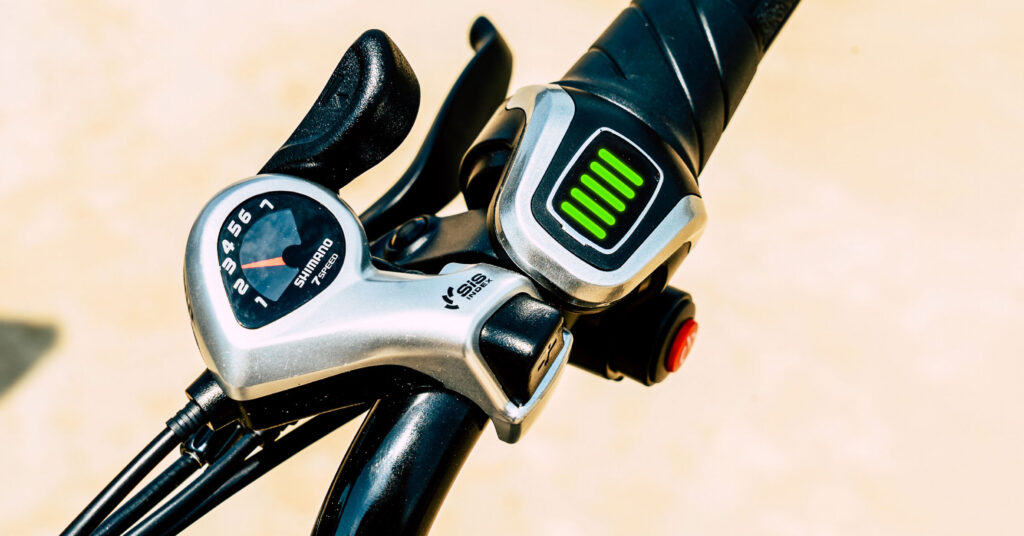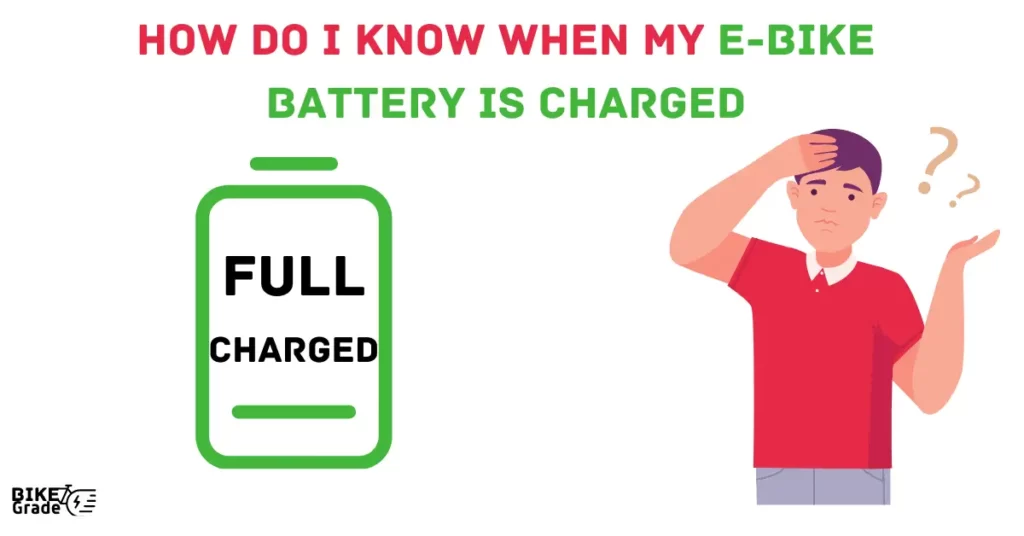Curious about how often you should charge your electric bike battery? Our maintenance guide has got you covered. Whether you’re a beginner or an experienced rider, we provide easy-to-follow guidelines and expert advice to help you keep your e-bike in top shape. From specialized cleaning solutions to must-have tools, we’ve got all the recommendations you need. Remember, a well-maintained electric bike not only performs better but also lasts longer. So, whether you’re using your e-bike for your daily commute, off-road adventures, or weekend jaunts, responsible ownership starts with understanding when and how often to charge your battery.

Factors Affecting Battery Charging
When it comes to charging your electric bike battery, there are several factors that can affect the charging process and overall battery life. Understanding these factors will help you make informed decisions about when and how to charge your battery.
Battery Type
The type of battery you have plays a significant role in determining the charging behavior. Lithium-ion batteries are the most common type used in electric bikes due to their high energy density and lightweight nature. These batteries are generally easier to charge and maintain compared to other types.
Battery Capacity
The capacity of your battery, measured in watt-hours (Wh), also impacts the charging frequency. A higher capacity battery will generally require less frequent charging compared to a lower capacity one. It’s essential to consider your specific needs and usage patterns when deciding on the battery capacity.
Riding Conditions
The riding conditions you encounter can affect how quickly your battery depletes and needs recharging. Factors such as terrain, temperature, wind resistance, and load on the bike can impact the battery’s energy consumption. Riding uphill, against strong winds, or with heavy cargo will drain the battery more quickly and may require more frequent charging.
Riding Frequency
The amount of time you spend riding your electric bike also plays a role in determining the charging frequency. If you use your e-bike daily for commuting or frequent long rides, you may need to charge the battery more often compared to someone who rides occasionally. Understanding your riding frequency will help you plan your charging schedule effectively.
Battery Charging Guidelines
Now that we’ve discussed the factors affecting battery charging let’s delve into some essential guidelines to follow when charging your electric bike battery, regardless of the specific factors that apply to you.
Manufacturer’s Recommendations
Always refer to the manufacturer’s recommendations for charging your electric bike battery. Each battery model may have specific guidelines that need to be followed to ensure optimal performance and longevity. The manufacturer is the best source of information when it comes to charging your battery correctly.
Regular Charging
It is generally advisable to charge your battery regularly rather than letting it fully deplete before charging again. Regular charging helps to maintain the battery’s overall health and prevents deep discharges. Aim to charge your battery after each ride or at least a couple of times a week, depending on your usage pattern.
Avoiding Deep Discharge
Deep discharging, where the battery is completely drained before recharging, can negatively impact the battery’s lifespan. It is best to avoid deep discharges whenever possible. Lithium-ion batteries perform optimally when kept between 20% to 80% charge. Try not to let the battery drop below 20% before recharging.
Avoiding Overcharging
Overcharging your battery can also be detrimental to its overall health. Most modern electric bike chargers are designed to prevent overcharging by automatically cutting off the charging process once the battery is fully charged. However, it is still recommended to unplug the charger once the battery reaches its full capacity to avoid any potential risks.
Charging Frequency Based on Usage
The frequency at which you should charge your electric bike battery depends on how often you ride and use your e-bike. Let’s explore the different scenarios and determine the best charging frequency for each.
Daily Riders
If you use your e-bike for daily commuting or frequent rides, it is advisable to charge your battery every day or every other day, depending on the battery capacity and your riding distance. This ensures that you always have enough power for your trips, and it helps prolong the battery’s lifespan by preventing deep discharges.
Occasional Riders
For riders who use their electric bike less frequently, such as on weekends or for occasional recreational rides, charging the battery once a week or every few rides should suffice. You can monitor the battery level and charge it when it reaches around 20% to 30% capacity.
Storage Periods
If you plan to store your electric bike for an extended period, such as during the winter months or when you won’t be using it for a while, it is crucial to prepare the battery properly. Before storing, charge the battery to around 50% to 70% capacity. This level of charge helps prevent deep discharges and ensures the battery remains in good condition during the storage period.
Charging Techniques and Best Practices
To maximize the performance and lifespan of your electric bike battery, there are specific charging techniques and best practices to keep in mind. Let’s explore these practices in detail.
Slow Charging vs Fast Charging
When it comes to charging your battery, a slow and steady approach is generally favorable. Slow charging, at a lower amperage, helps reduce heat buildup and prolongs the battery’s life. Fast charging, on the other hand, can generate more heat and may have a slight impact on battery longevity. While fast charging is convenient when you’re in a hurry, it’s best to prioritize slow charging whenever possible.
Maintaining Moderate Battery Temperatures
Extreme temperatures can have a detrimental effect on battery performance and lifespan. Avoid exposing your electric bike battery to extreme heat or cold whenever possible. If you’re charging the battery indoors, make sure the charging area is at a moderate temperature. Similarly, during rides, try to keep the battery away from direct sunlight to prevent overheating.
Optimal Charging Time
Charging your battery for the right amount of time is crucial to its overall health. Most electric bike batteries require a few hours to reach a full charge. To avoid overcharging, it is recommended to keep an eye on the charging progress and unplug the charger once the battery has reached its full capacity. This practice prevents overcharging and reduces the risk of any potential battery issues.
Equalizing the Battery Cells
In some cases, the battery cells in your electric bike battery may become imbalanced, leading to uneven charging and discharging. To address this issue, some battery management systems have an equalizing charging mode. This mode helps balance the individual cells in the battery to improve overall performance. Check if your battery has this feature and utilize it periodically to maintain optimal cell balance.

Tips for Prolonging Battery Life
Now that we’ve covered the charging techniques and best practices, let’s explore some additional tips that can help prolong the life of your electric bike battery.
Avoiding Extreme Temperatures
As mentioned earlier, extreme temperatures can have a negative impact on battery performance and longevity. Whenever possible, avoid exposing your battery to extreme heat or cold. If you live in an area with extremely hot summers or cold winters, consider storing your battery indoors when not in use.
Proper Storage
Proper storage is vital to maintaining the health of your electric bike battery, especially during times when you won’t be using it for an extended period. Store the battery in a cool, dry place, away from direct sunlight and extreme temperatures. Avoid storing the battery fully charged or fully depleted, as either state can lead to degradation. Aim for a 50% to 70% charge level before storing.
Regular Maintenance
Regular maintenance of your electric bike battery is crucial for maximizing its lifespan. Clean the battery contacts regularly to remove any dirt or debris that could affect the charging process. Ensure that the battery is securely connected to the bike and that all connections are tight. Regularly inspect the battery casing for any signs of damage and address any issues promptly.
Avoiding High-Capacity Charging
While it may be tempting to charge your battery to its maximum capacity for longer rides, it’s best to avoid high-capacity charging whenever possible. Charging the battery to its maximum capacity increases stress on the cells and can potentially shorten the battery’s lifespan. Opt for charging to a moderate level instead, around 80%, to ensure a balance between battery life and ride distance.
Common Battery Charging FAQs
Here are some common questions that e-bike owners often have about battery charging:
Can I Overcharge my Battery?
Most modern electric bike chargers have built-in safety features that prevent overcharging. However, it is still advisable to unplug the charger once the battery reaches its full capacity to avoid any potential risks.
Can I Charge my Battery Overnight?
Charging your battery overnight is generally safe, as long as you’re using a charger that is compatible with your battery model and has built-in safety features. However, it is recommended to keep an eye on the charging progress and unplug the charger once the battery is fully charged.
Should I Let my Battery Die Completely?
No, it is not necessary or advisable to let your battery die completely before recharging. Lithium-ion batteries perform optimally when kept between 20% to 80% charge. Deep discharging the battery can negatively impact its lifespan.
Can I Use a Different Charger?
It is generally recommended to use the charger that comes with your electric bike or one that is recommended by the manufacturer. Using a different charger may not be compatible with your battery, leading to potential safety risks or reduced charging efficiency.

Conclusion
Properly understanding the factors affecting battery charging, following the recommended guidelines, and implementing the best charging practices are essential for maximizing the performance and lifespan of your electric bike battery. Remember to refer to your manufacturer’s recommendations, charge regularly, avoid deep discharges and overcharging, and follow the specific charging techniques based on your usage pattern. By following these guidelines, you can enjoy longer rides and extend the overall life of your electric bike battery.




